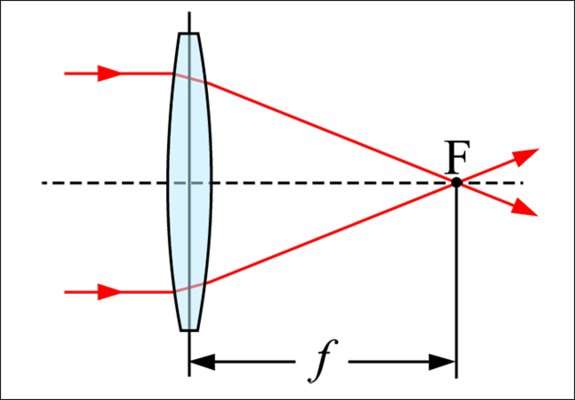Last Updated on January 23, 2022
How to Use Focal Length and Crop Factor?
One of the coolest things in photography is the possibility of interchanging lenses in our cameras. Both DSLR and mostly-all Mirrorless Camera systems have the ability to do this, and there is a high chance that you got a mind-blowing catalog of lens options when you bought your camera.

Nikonusa.com
Here we’ll talk a bit about focal lengths and how to choose among all that huge variety of lenses out there. Beyond that, we’ll also talk about how lenses could behave differently when attached to full-frame or APS-C cameras.

The Main Categories
Page Contents
Focal lengths can be divided into three main large groups, which are wide, standard and telephoto lenses. Let’s start with the most important of them all, the normal focal length.
Normal or 50mm
This focal length is the exact equivalent of the human eye, hence the “normal” title. It is easier to perceive it when using a full-frame (or any regular film camera) but will discuss that in just a sec. 50mm lenses offer the best entry-level experience after understanding exposure, especially aperture because they usually come with wide aperture values (usually spanning between f/2 to even f/0.95).

Take in mind that there will be huge price variations depending on the aperture and built-in materials (this rule applies to all lenses in general, that’s why there are so many options out there).
Camera manufacturers usually offer a friendly 50mm lens that is usually called “nifty-fifty” due to its somewhat cheap construction. But don’t let that derive you from using them, it is the best way for taking your photography to the next level as a committed beginner.
Wide Lenses
Anything below 50mm is considered to be a wide-angle focal length, and as the number decreases, the wider the view you can achieve.

This allows photographers to distort reality, making everything look wider than it really is, and there are multiple reasons why you might want to achieve that from interior real-estate shots (really wide focal lengths like 14mm or so) to nice documentary photographs filled with rich context (anything from 28mm to 35mm is perfect for this).
Telephoto Lenses
Just like wide-angle lenses, anything further from 50mm is considered to be a telephoto lens. And the effect is the opposite, as the millimeters increase, the angle of view will become more and more narrow.

Short telephoto lenses like the 85mm options are the favorite choice for professional portrait photographers, and larger lenses are usually used for getting closer to the action when not physically possible, like while covering sports or photographing the wild-life in its natural habitat.
Let’s Talk About Zoom Lenses
The above is perfect for prime lenses, which usually render a higher image quality than cheap zoom lenses. But, what are zooming capable lenses though? Well, they allow us to cover a wide range of focal lengths via a single device. The most common zoom lens is the commonly known “kit-lens” that comes with entry-level cameras.

Nikonusa.com
This wrongly under-seen lens runs from 18mm to 55mm, making it a very good lens for making a wise purchase in the future. The thing is that if you feel the need to always getting closer or having a more powerful zooming capability, then you’ll probably need a more powerful zooming lens (like the 70-200mm) or a fixed telephoto lens like a 300mm or 400mm or even higher.
On the other hand, if you keep constantly shooting between 18mm and 35mm for example, then you might need a prime lens between that range. The important thing here is to make a wise investment after having a somewhat clear notion of what you want to achieve with your photos.
Beyond that, there’s also one thing that you need to understand about the kit-lens, it also has a variable aperture, which makes it a very limited lens (hence the need of a nifty-fifty as your next lens), especially when working on limited light situations. These lenses tend to vary their maximum aperture of f/3.5 (at 18mm) to f/5.6 (when fully extended to 55mm).
Specialty Lenses
There are some lenses that have been designed and developed to deliver specific results.
Macro Lenses

These lenses have a more powerful focusing capability, making them perfect for really close photographs. They usually span between 65mm to 200mm, the variations that imply pricing will be related to aperture, focusing motors, internal materials, and focal length; just like any other regular lens.
Tilt-Shift Lenses

These lenses are extremely specific and have a lot to do with plane movements that allow prospective enhancements and miniature effects. They are the closest we can get to large-format view cameras with digital.
Fish-Eye Lenses

These lenses are extremely wide and can reach as low as 4.5mm and usually depict a circular fringe around the frame.
What’s that Crop Factor?
If you are new to photography, they will be a high chance that you’ll get an entry-level DSLR or Mirrorless Camera System. These come with a built-in APS-C sensor, which is smaller than you think. In order to understand this, we’ll have to define what a full-frame sensor is.

A full-frame sensor is the exact equivalent of a 35mm piece of film from the analog era, hence the mention to film cameras when talking about normal lenses.
APS-C sensors are smaller than full-frame cameras, and unless you get a specifically APS-C sensor designed lens, you’ll have to consider crop factor whenever using a lens. This will depend on your camera brand, but crop factors in APS-C sensors are usually 1.5 or 1.6 times the focal length.
Therefore, if you are using a 35mm lens on a camera that has a crop factor of 1.6, your lens will produce a cropping effect equivalent to a 56mm lens. This shouldn’t be confused with the zooming effect lenses produce as focal lengths increase; this is just a cropping result and not a real zooming action.